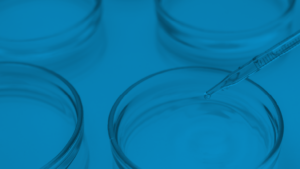Methods of Environmental Monitoring: Water vs. Air Sampling

Aseptic manufacturing: what is it?
A number of aseptic procedures carried out in a sterile setting make up aseptic production. By keeping germs out, an aseptic procedure avoids contamination. In order to prevent microbiological contamination, aseptic healthcare goods are manufactured and packaged in controlled settings. In order to prevent medical devices or products from becoming contaminated by microbiological material from technicians, raw materials, or machinery, an aseptic atmosphere is maintained by the use of specialized (often automated) equipment, water monitoring, and air sampling. The chain of infection can be broken by contamination risk mitigation measures including air and water sampling.
Which medical items, for instance, are produced in aseptic settings?
Sterile pharmaceutical items
Sterilized drug compounds in bulk
Intermediates that are sterile
Excipients
Medical equipment
The biologics
Why is air sampling crucial for aseptic manufacturing process environmental monitoring?
To maintain an incredibly low level of microbiological contamination in aseptic environments, air monitoring is essential. As a result, samples of the air are taken frequently to check for any living microorganisms in aseptic surroundings. There are no USP-specific standard techniques for air sampling, and research on the subject shows that air sampling techniques vary widely. Therefore, don’t assume that comparable air sample quantities collected using various techniques will result in comparable rates of microbial recovery when choosing an air sampling methodology. Below is a detailed description of the top seven techniques for sampling airborne microbial pollutants. See our post HERE for additional details on the main causes of microbial contamination in production settings.
Why is it that produced products require water sampling?
Waterborne microorganisms can readily infect parenteral or cosmetic items while they are being manufactured. As a result, continuous environmental monitoring and control for product manufacture depends heavily on water sampling and testing. An incorrectly obtained water sample may produce a false-positive or false-negative result. These outcomes may result in either needless remediation when none is required or inaction when remedial action is required. Thus, water quality control and environmental monitoring excellence depend on the development of an appropriate water sampling plan, the collection of water samples, and the interpretation of test results.

When does air sampling take place?
Daily to weekly air monitoring of different places is carried out, depending on the needs of cleanroom manufacturing. The most stringent cleanroom conditions are found in isolaters.
At what time is a water sample taken?
The results of water testing are used for quality control (QC) of the water extracted from the purification system for manufacturing or assembly cleaning, or process control (PC) of the water purification and distribution system. Depending on the risk assessment of the purification system and industrial operations, water testing is done daily, weekly, or monthly at different system sites.
Which techniques are best for air sampling?
#1: Air Sampler Slit-To-Agar (STA)
STA samplers are powered by a connected vacuum. A slit is used to gain the air intake. Any impurities on a nutrition agar surface are captured by a gently rotating Petri dish underneath the slit. Flying The agar plates will support the growth of viable organisms. Any organisms that are caught are then described and evaluated for the number and kind of microorganisms they contain. Slit-to-agar systems typically have a sample capacity of 80 liters per minute.
#2: Impactor Sieve
One common choice for air sampling is a sieve impactor. A container containing a nutrition agar Petri dish is housed in an impactor. There are holes on the cover of the container that holds the petri dish that allow air to get through. The “sieve” that is used to catch airborne germs is provided by these perforations. A certain amount of air is drawn through the sieve cover by a vacuum pump. The agar absorbs live bacteria in the air and allows them to develop. Nestled sieves with progressively smaller perforations are a feature of certain samplers. Viable microorganisms are sorted by particle size using nested sieves.
#3: Sampler Centrifugal
One of the most widely used sampling techniques is centrifugal sampling. A propeller or turbine in a centrifugal sampler collects a certain volume of air and forces it to strike a nutritious agar strip positioned tangentially. The nutrient agar strip, which is held up by a flexible plastic base, gathers any living bacteria.
#4: Atrium of Sterilized Microbiology
The single sieve impactor is comparable to the sterilizable microbiological atrium. There are consistent, 0.25-inch perforations in the atrium’s cover. A Petri dish filled with nutritional agar is located at the bottom of the device. Air flow through the unit is managed by a vacuum pump. Atrium systems provide remote sampling probes and control centers for many units.
#5: Sampler for Surface Air Systems
There is an agar plate near the surface air system’s entrance. Air is drawn through the unit’s perforated cover, over the agar contact plate, and out the back of the motor by a motorized turbine behind the agar plate. The agar plate is used to collect any living bacteria. Surface air sampling equipment typically has a sampling capacity of just over 80 liters per minute.
#6: Sampler for Gelatin Filter
A vacuum pump with an extension hose that terminates in a filter holder powers the gelatin filter sampler. The gelatin strands that make up the filter hold onto airborne bacteria. The filter is aseptically removed and dissolved in a diluent in order to assay live bacteria. After that, the resultant solution is evaluated by plating it on an agar substrate.
#7: Plates for Settling
The least expensive method of evaluating airborne microorganisms is to use settling plates.
When determining environments over extended exposure times (four to five hours), settling plates perform well. When evaluating regions where sampling vacuums are invasive or dangerous to the aseptic process, settling plates come in helpful. However, the amount of air that can be examined using settling plates is constrained. To increase sensitivity, at least one cubic meter of air should be examined when the microbiological level in the air is anticipated to have low contamination levels. With settling plates, exposure is determined by time rather than a measured airflow volume, therefore exposure to one cubic meter of air cannot be assured.
Which techniques are best for sampling water?
Water sampling techniques are identical for process control and quality control sampling, in contrast to air sampling. The location of the water sample varies for water sampling, but the aseptic technique remains the same. Water sampling is primarily used to monitor and stop the production of bacterial biofilms in pipelines or reservoirs, whereas air sampling is primarily used to regulate contaminants that are driven by technicians. To avoid or diagnose parenteral product contamination, four types of water sources are routinely analyzed. Water from the purified distribution system, water used for water-for-injection cleaning systems, pretreatment and purification system water, and source water (drinking water) are the four types of water sources. To get rid of any in-valve biofilms that aren’t typical of the whole water source, valves and ports are thoroughly cleansed during the sample procedure.
In Brief
The environmental monitoring of manufactured goods depends on the procedures of air and water sampling. The suitability of a manufacturing environment for preventing microbiological contamination of medical products during manufacture and packing is determined by air sampling. Water sampling is essential to the continuous environmental monitoring and control for aseptic product manufacturing because microorganisms in the water can readily contaminate parenteral or cosmetic items during manufacturing. Air samples are obtained using a variety of techniques. The two most common types of airborne sampling are centrifugal and impaction samplers. Water sampling, on the other hand, employs a single technique for either quality control (QC) of the water being extracted from the system for product manufacturing or assembly cleaning, or process control (PC) of the water purification and distribution system. All things considered, be sure the contract testing company you select can offer the proper environmental monitoring and microbial testing for your product requirements.






